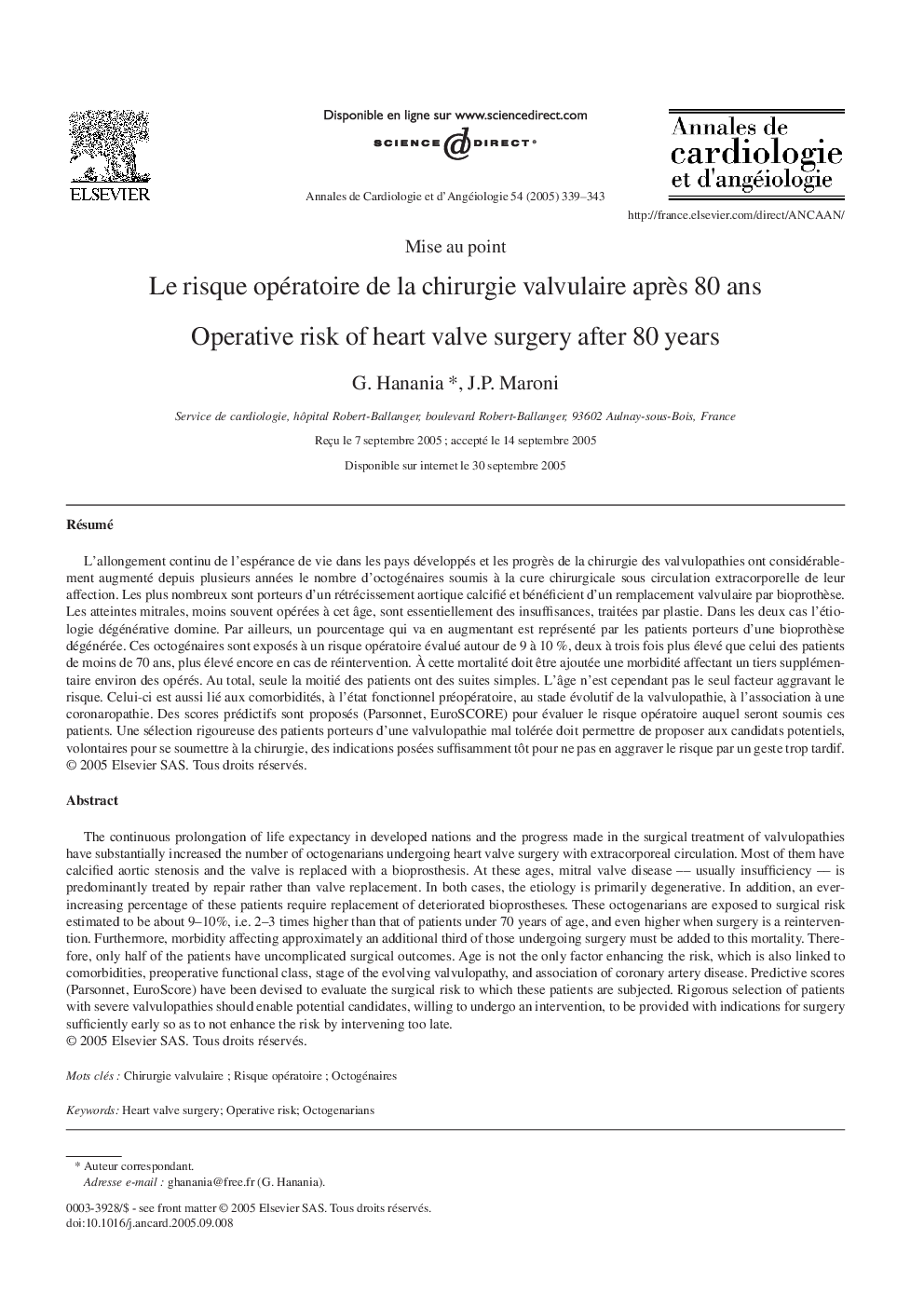| Article ID | Journal | Published Year | Pages | File Type |
|---|---|---|---|---|
| 9157283 | Annales de Cardiologie et d'Angéiologie | 2005 | 5 Pages |
Abstract
The continuous prolongation of life expectancy in developed nations and the progress made in the surgical treatment of valvulopathies have substantially increased the number of octogenarians undergoing heart valve surgery with extracorporeal circulation. Most of them have calcified aortic stenosis and the valve is replaced with a bioprosthesis. At these ages, mitral valve disease -- usually insufficiency -- is predominantly treated by repair rather than valve replacement. In both cases, the etiology is primarily degenerative. In addition, an ever-increasing percentage of these patients require replacement of deteriorated bioprostheses. These octogenarians are exposed to surgical risk estimated to be about 9-10%, i.e. 2-3 times higher than that of patients under 70 years of age, and even higher when surgery is a reintervention. Furthermore, morbidity affecting approximately an additional third of those undergoing surgery must be added to this mortality. Therefore, only half of the patients have uncomplicated surgical outcomes. Age is not the only factor enhancing the risk, which is also linked to comorbidities, preoperative functional class, stage of the evolving valvulopathy, and association of coronary artery disease. Predictive scores (Parsonnet, EuroScore) have been devised to evaluate the surgical risk to which these patients are subjected. Rigorous selection of patients with severe valvulopathies should enable potential candidates, willing to undergo an intervention, to be provided with indications for surgery sufficiently early so as to not enhance the risk by intervening too late.
Related Topics
Health Sciences
Medicine and Dentistry
Cardiology and Cardiovascular Medicine
Authors
G. Hanania, J.P. Maroni,
